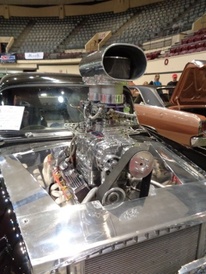
To borrow a famous slogan, just do it.
There is still some confusion about changing to a different type of oil in vehicles, particularly older models that have accumulated many miles. A small group of ill-informed individuals in garages and on blogs still cling to old beliefs that synthetic motor oils cause roller followers to “slip or skid,” or that switching to synthetic motor oil causes issues in older engines, particularly oil leaks.
Facts have since replaced these outdated ideas about synthetics causing engine problems. The use of synthetic lubricants is growing rapidly because properly formulated synthetics offer benefits well beyond what conventional and synthetic blend products can provide. Many new passenger car and light truck vehicles come factory filled with synthetic lubricants – not just high-performance sports cars.
There are a couple of ways to install AMSOIL synthetic motor oils for the first time.
• Jump right in and simply change the oil – many people do this with excellent results
• Flush the engine first – this process more immediately removes sludge and debris accumulated over time
The main difference between flushing your engine and a normal oil change to synthetics is the rate at which the built-up debris is removed from older engines. If you change to AMSOIL synthetic motor oil without flushing, accumulated debris is cleaned from the engine over subsequent oil changes. When you use AMSOIL Engine and Transmission Flush, the cleanup is more immediate and helps ensure the engine is clean and free of any accumulated contaminants.
We recommend using AMSOIL Engine and Transmission Flush if your engine has a questionable history or is known to have deposits. It’s also great insurance if you simply want to give your vehicle a fresh start. It’s exactly what I did after buying a Honda CR-V a couple years ago with 157,000 miles on the odometer. After flushing the engine, installing AMSOIL Signature Series 5W-30 Synthetic Motor Oil and an Ea® Oil Filter, the engine – now at 190,000 miles – has run flawlessly ever since.
Whichever procedure you use, be confident you’re putting the best product in your engine when switching to AMSOIL synthetic motor oil.
Ask Rick for AMSOIL on your next oil change!
There is still some confusion about changing to a different type of oil in vehicles, particularly older models that have accumulated many miles. A small group of ill-informed individuals in garages and on blogs still cling to old beliefs that synthetic motor oils cause roller followers to “slip or skid,” or that switching to synthetic motor oil causes issues in older engines, particularly oil leaks.
Facts have since replaced these outdated ideas about synthetics causing engine problems. The use of synthetic lubricants is growing rapidly because properly formulated synthetics offer benefits well beyond what conventional and synthetic blend products can provide. Many new passenger car and light truck vehicles come factory filled with synthetic lubricants – not just high-performance sports cars.
There are a couple of ways to install AMSOIL synthetic motor oils for the first time.
• Jump right in and simply change the oil – many people do this with excellent results
• Flush the engine first – this process more immediately removes sludge and debris accumulated over time
The main difference between flushing your engine and a normal oil change to synthetics is the rate at which the built-up debris is removed from older engines. If you change to AMSOIL synthetic motor oil without flushing, accumulated debris is cleaned from the engine over subsequent oil changes. When you use AMSOIL Engine and Transmission Flush, the cleanup is more immediate and helps ensure the engine is clean and free of any accumulated contaminants.
We recommend using AMSOIL Engine and Transmission Flush if your engine has a questionable history or is known to have deposits. It’s also great insurance if you simply want to give your vehicle a fresh start. It’s exactly what I did after buying a Honda CR-V a couple years ago with 157,000 miles on the odometer. After flushing the engine, installing AMSOIL Signature Series 5W-30 Synthetic Motor Oil and an Ea® Oil Filter, the engine – now at 190,000 miles – has run flawlessly ever since.
Whichever procedure you use, be confident you’re putting the best product in your engine when switching to AMSOIL synthetic motor oil.
Ask Rick for AMSOIL on your next oil change!





 RSS Feed
RSS Feed
